
Friender
2019/03 - 2019/04
6 weeks, 4-person team
User Experience / User Interface
A collaborative project with Made by Many designs a value exchange system without relying on financial transactions. Appearance is usually in a high position in common dating apps. A real relationship indeed needs time and trust to build with. Friender is a new way of dating platform designed to exchange levels of stories to get connected. Types of media represent different values of privacy. Through using in-app tools, archives will be created on several levels. Users need to ask for consent for exchange. Just a game, another level will be unlocked once reached a certain of time and amount of trust. The ultimate goal is meeting physically.
Sketch | Illustration CC | Photoshop CC

Background
Made by Many is a digital product design consultancy based in London. MxM creates an innovative outcome that placed equal focus on strategy and execution for their clients such as Nondo’s, Skype and BBC.
Finding
Take time
To build a relationship needs time. Studies show people usually feel disappointed after the first date as the contradictions between their expectation based on the profile (picture and description) and reality. Dating platforms are usually treated as a launching stone and not do further on relationship building. Users usually won’t stay long in-app to make a deeper conversation to get better know each other before meeting.
Speedy decision
Dating platforms like Tinder and Bubble advise users to upload photo/video with their faces to double matches. It is easy to see people doing mindless swiping to determine the person, which is a match or not, superficially by the appearance shown on the profiles that are given randomly by location. People seldom click into the profile to read the bio if “no face shown”. Potential matches may be missed.
Building of trust
Studies stated people are hard to build “real” relationships because of trust. It is hard to identify which information is fake in the digital world. Except for scam, one of the popular reasons for hiding or using fake information is self-identity protection. These users indeed will show more once trust is built. Because of the design of the apps, there is no chance for them to discover another beauty of the person instead of appearance.
Level of privacy
Everyone has a different measurement of personal privacy. During the study, revealing faces are commonly defined as the most valuable when comparing to voices, personal objects, etc. Many interviewees indeed showed that there is a scale of privacy using different types of media while using social media. Dating apps nowadays usually are limited users to achieve their needs on privacy protection. Users can only follow the mainstream if they want to get connected.

“Design a product or service that establishes a system of value that doesn’t rely on financial transactions.”
— Design brief


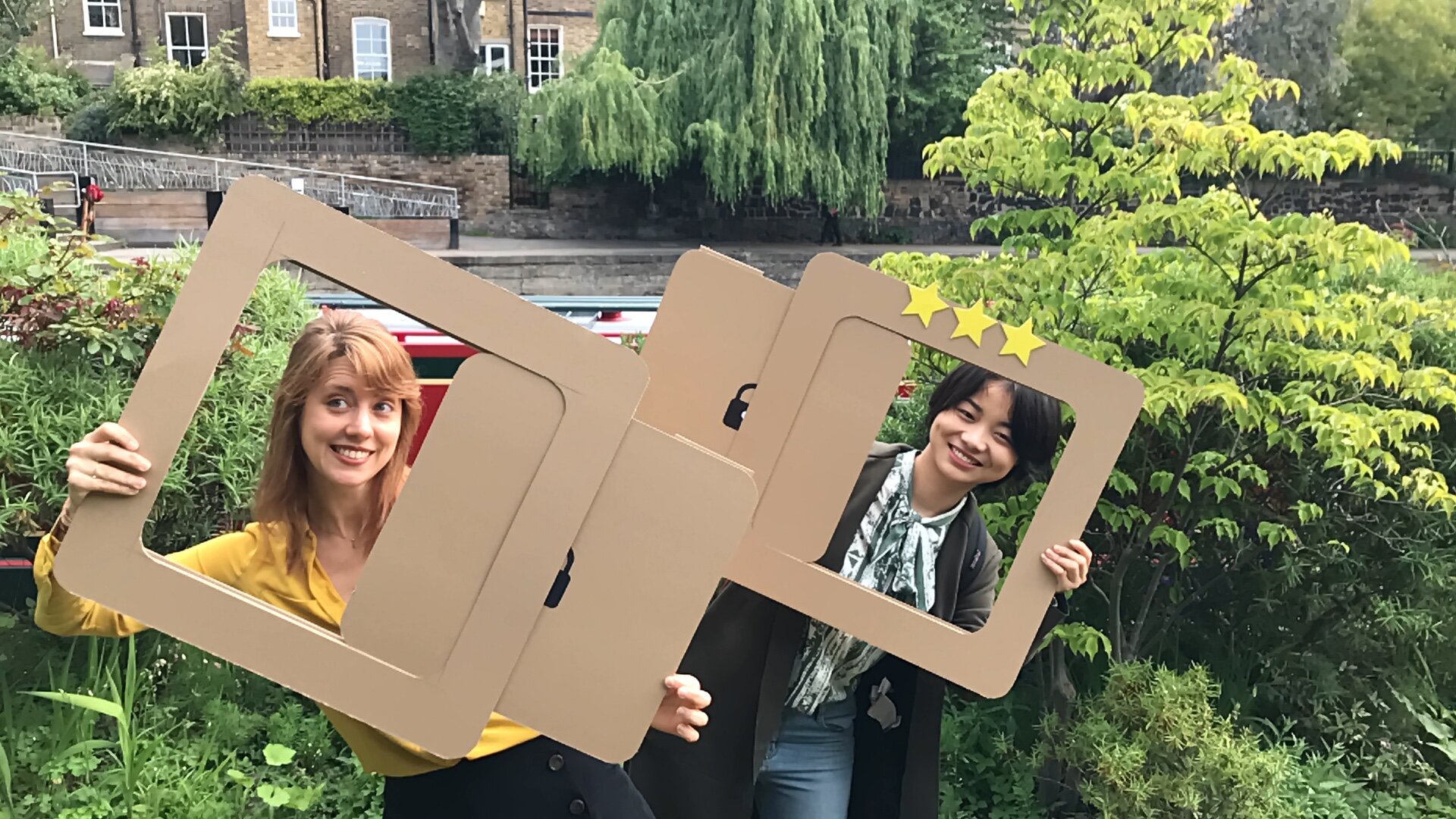
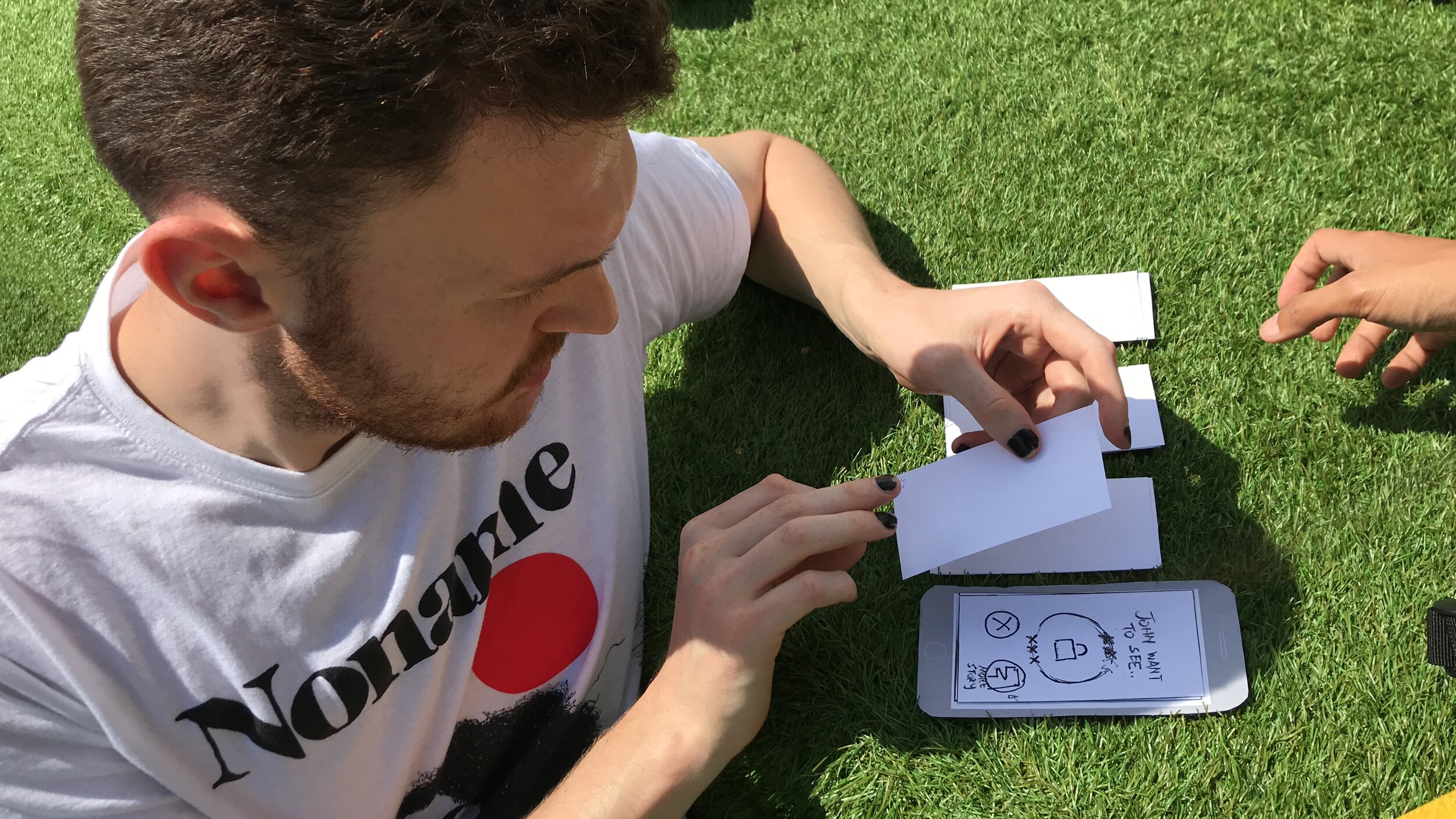
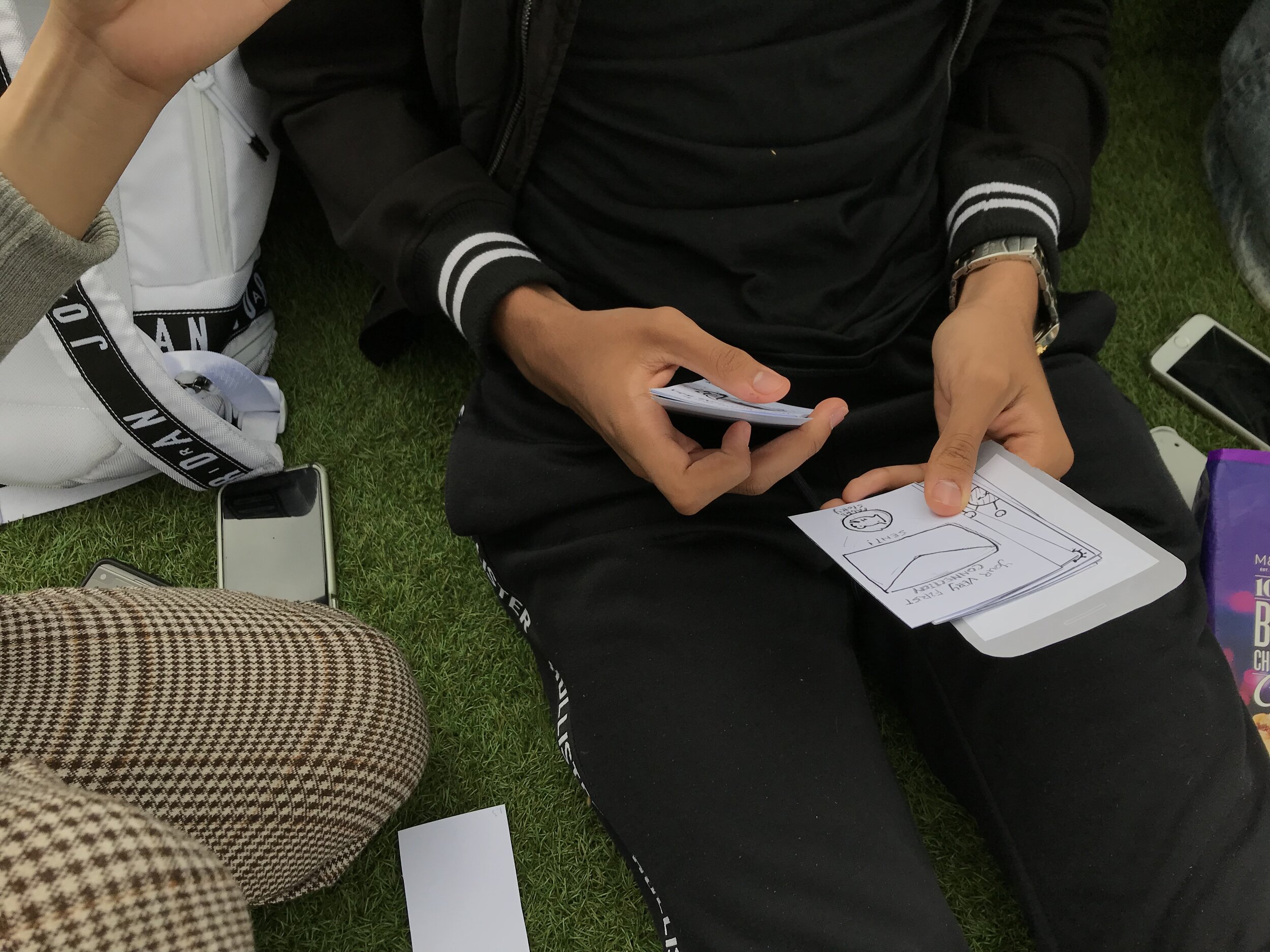
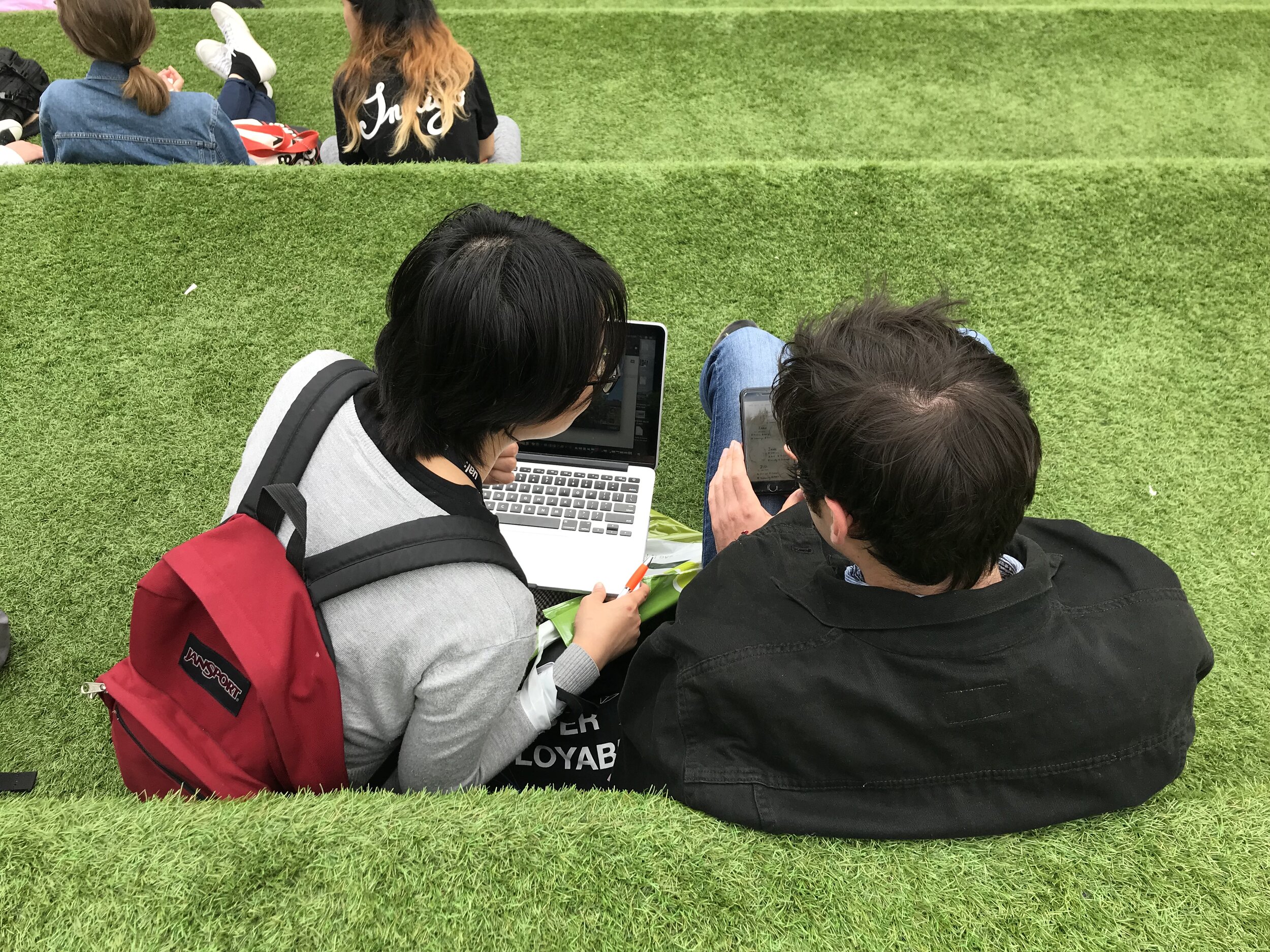
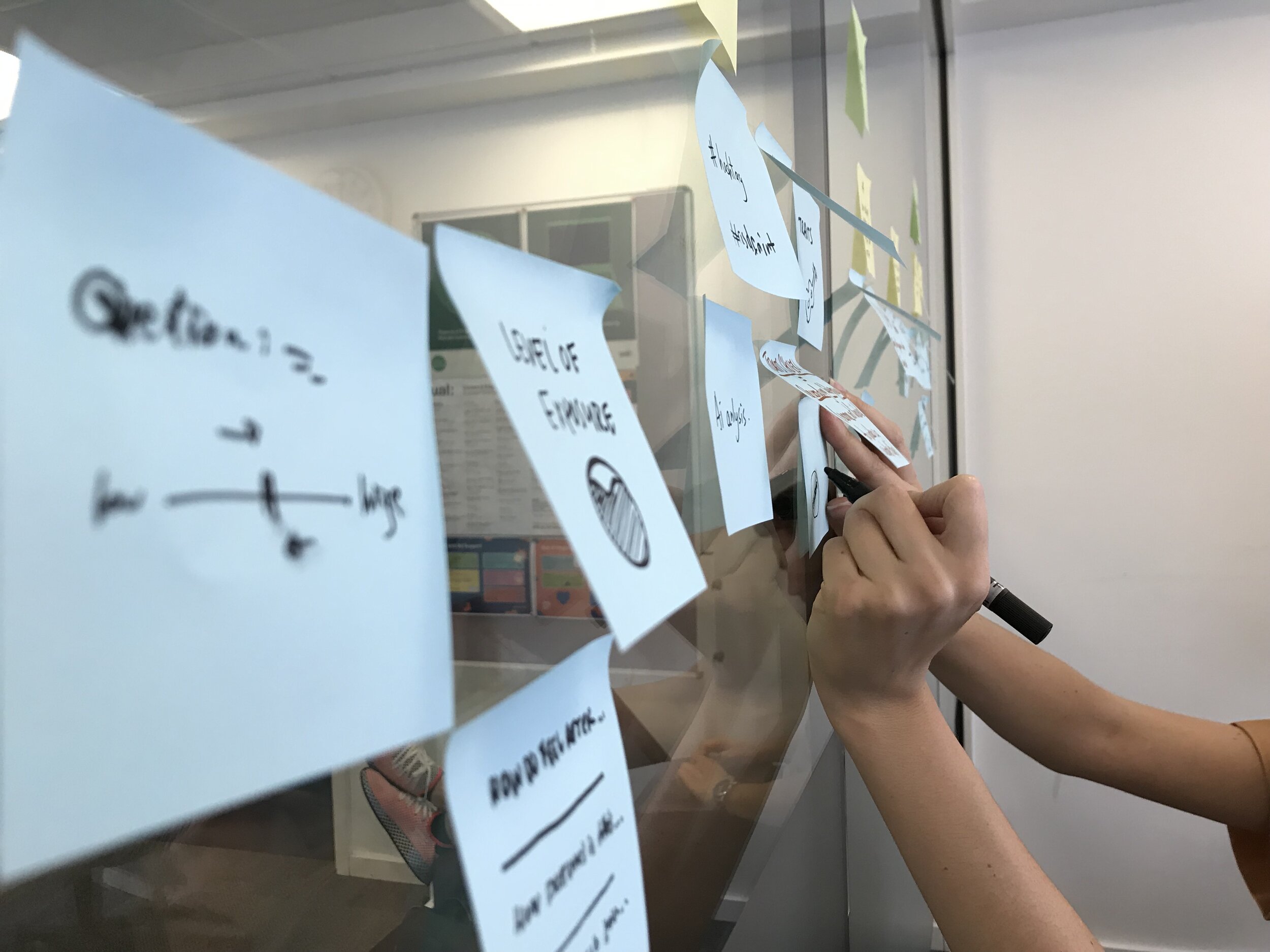
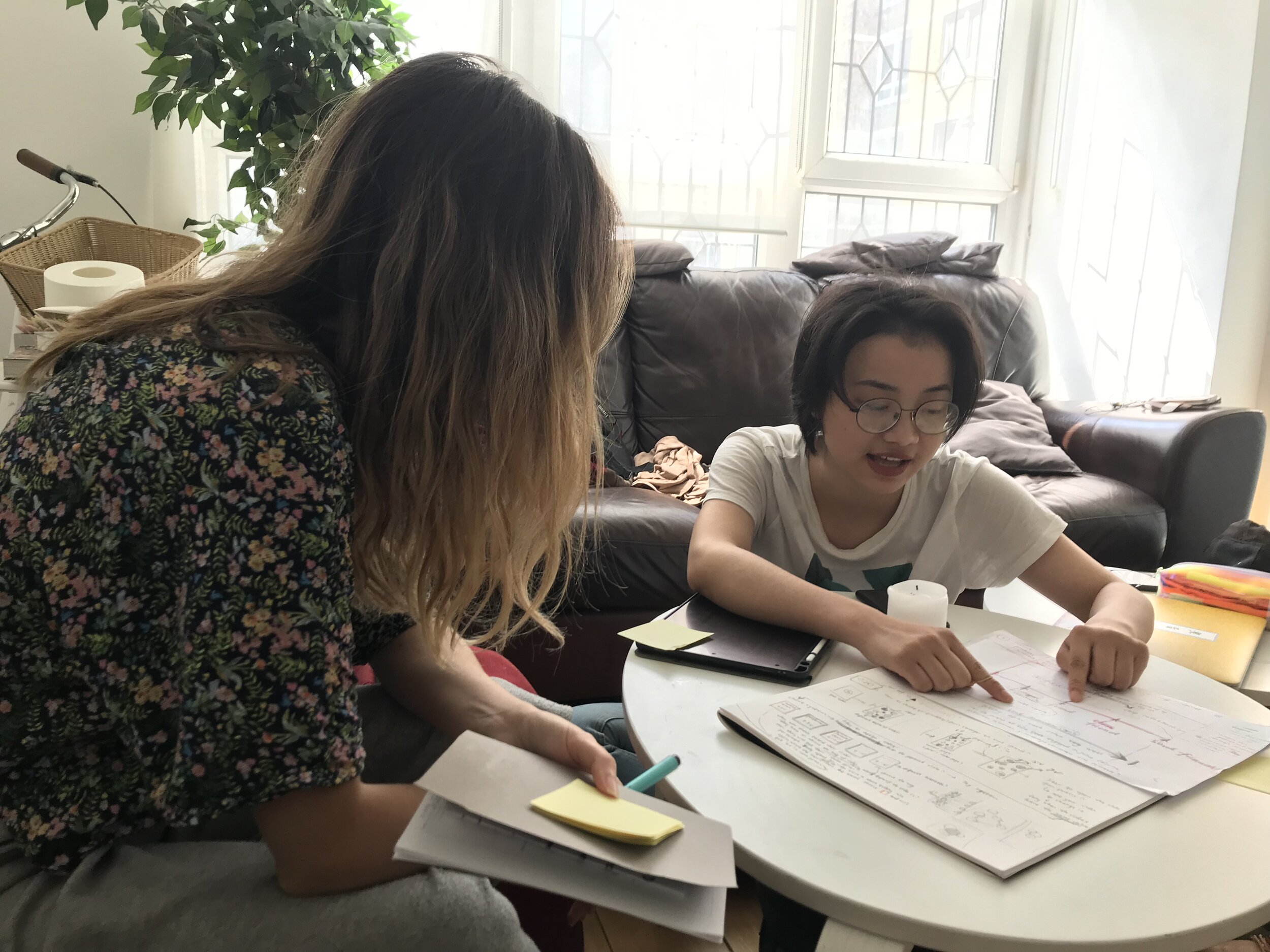
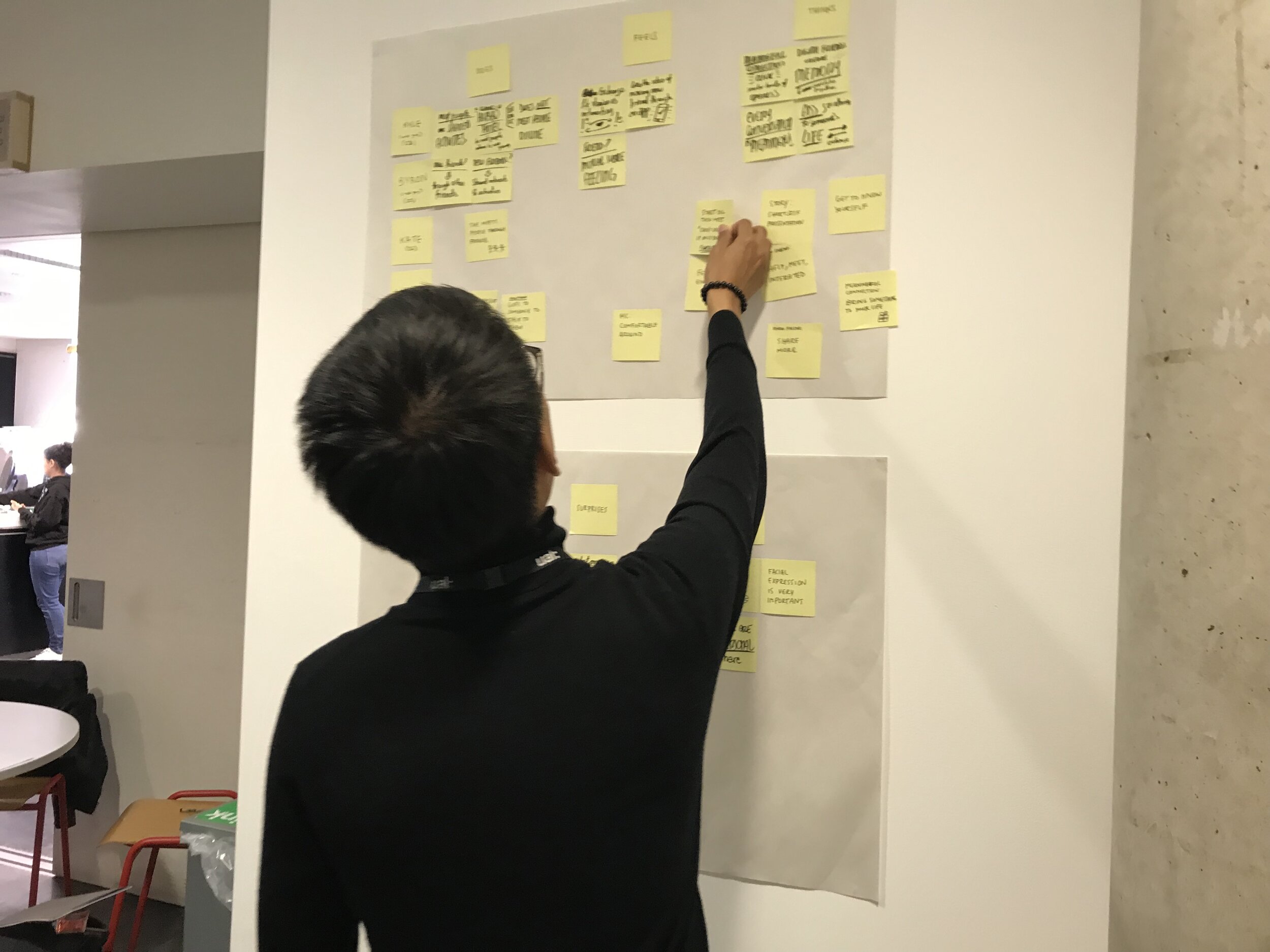
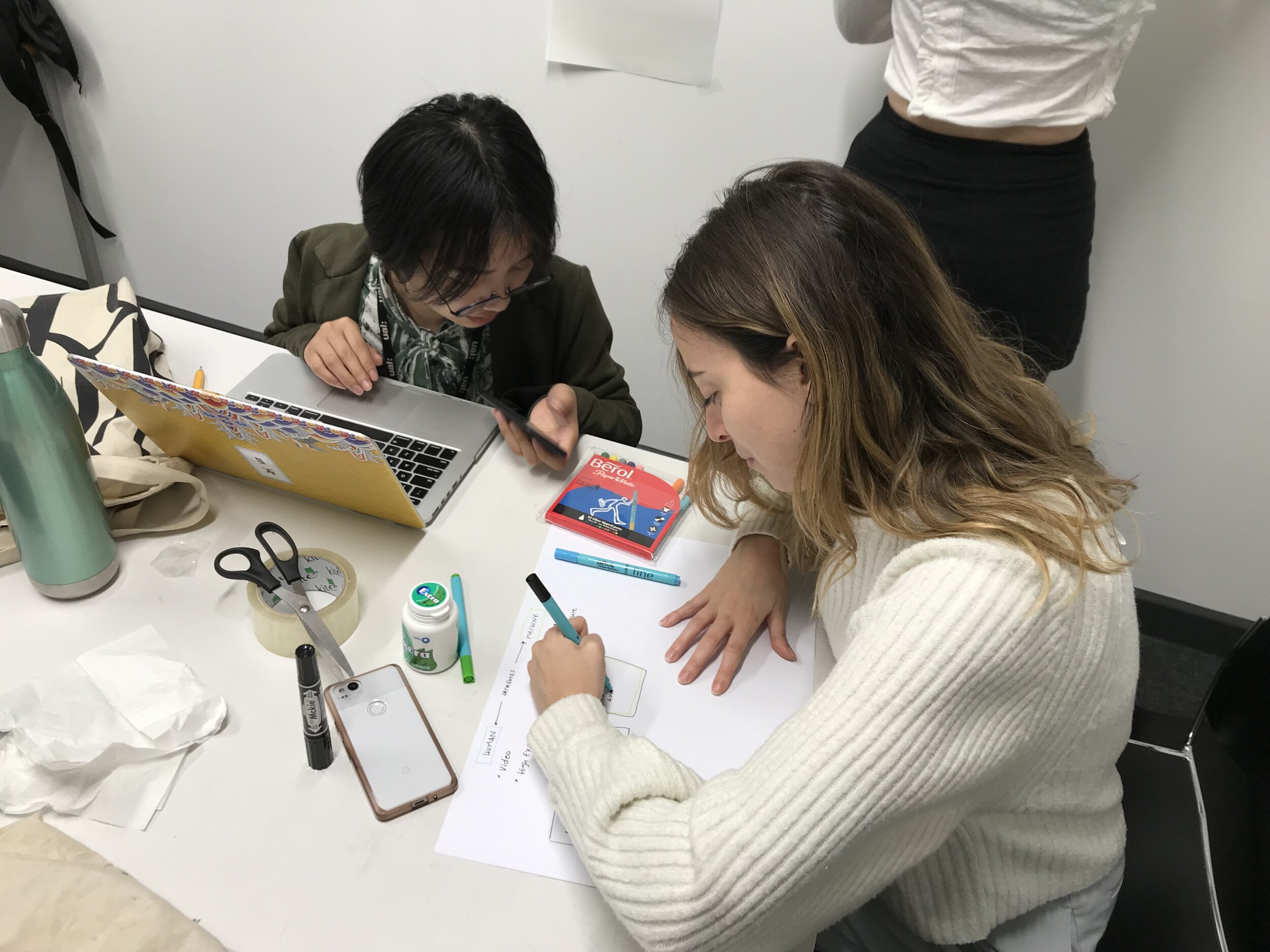
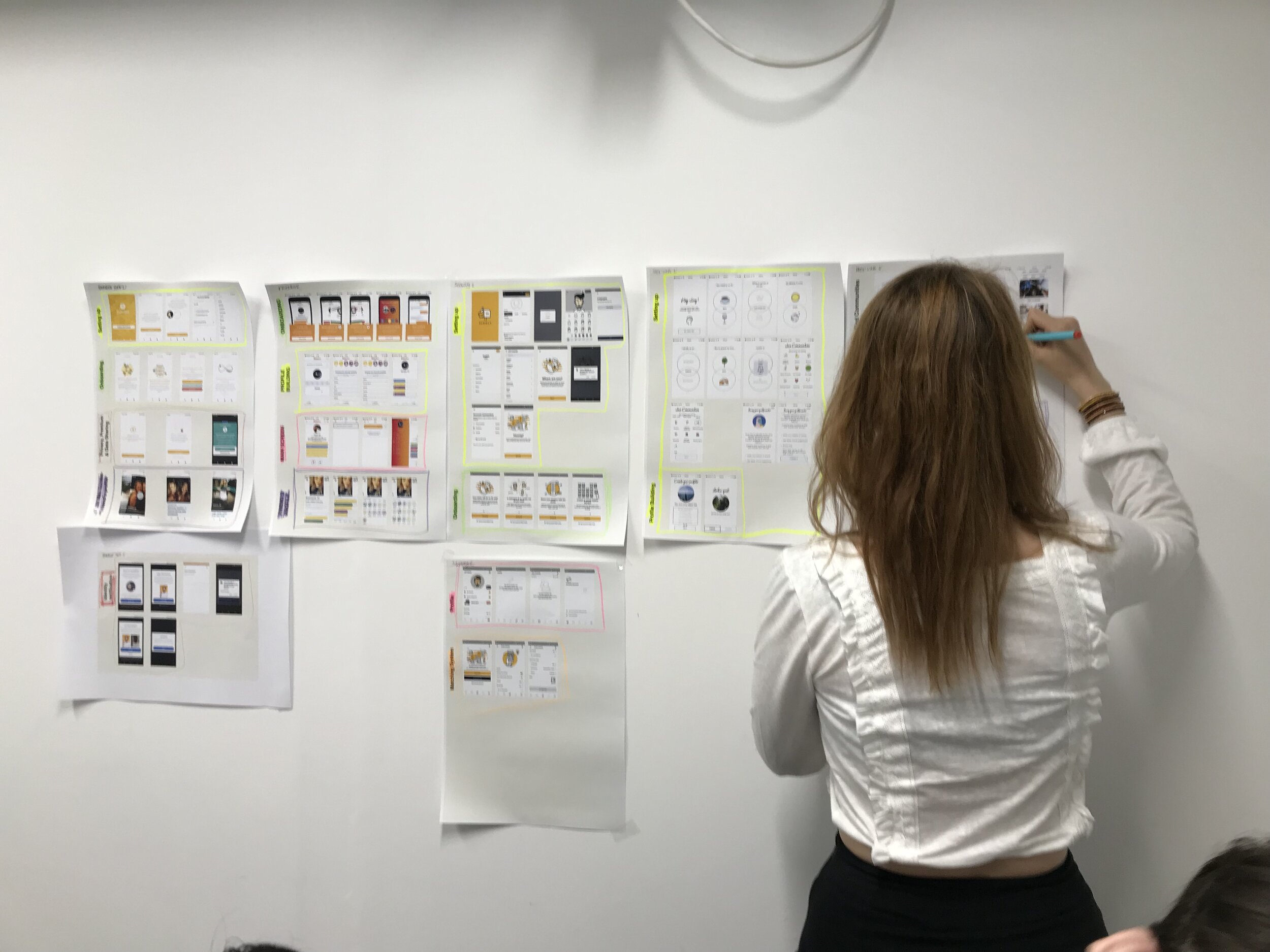
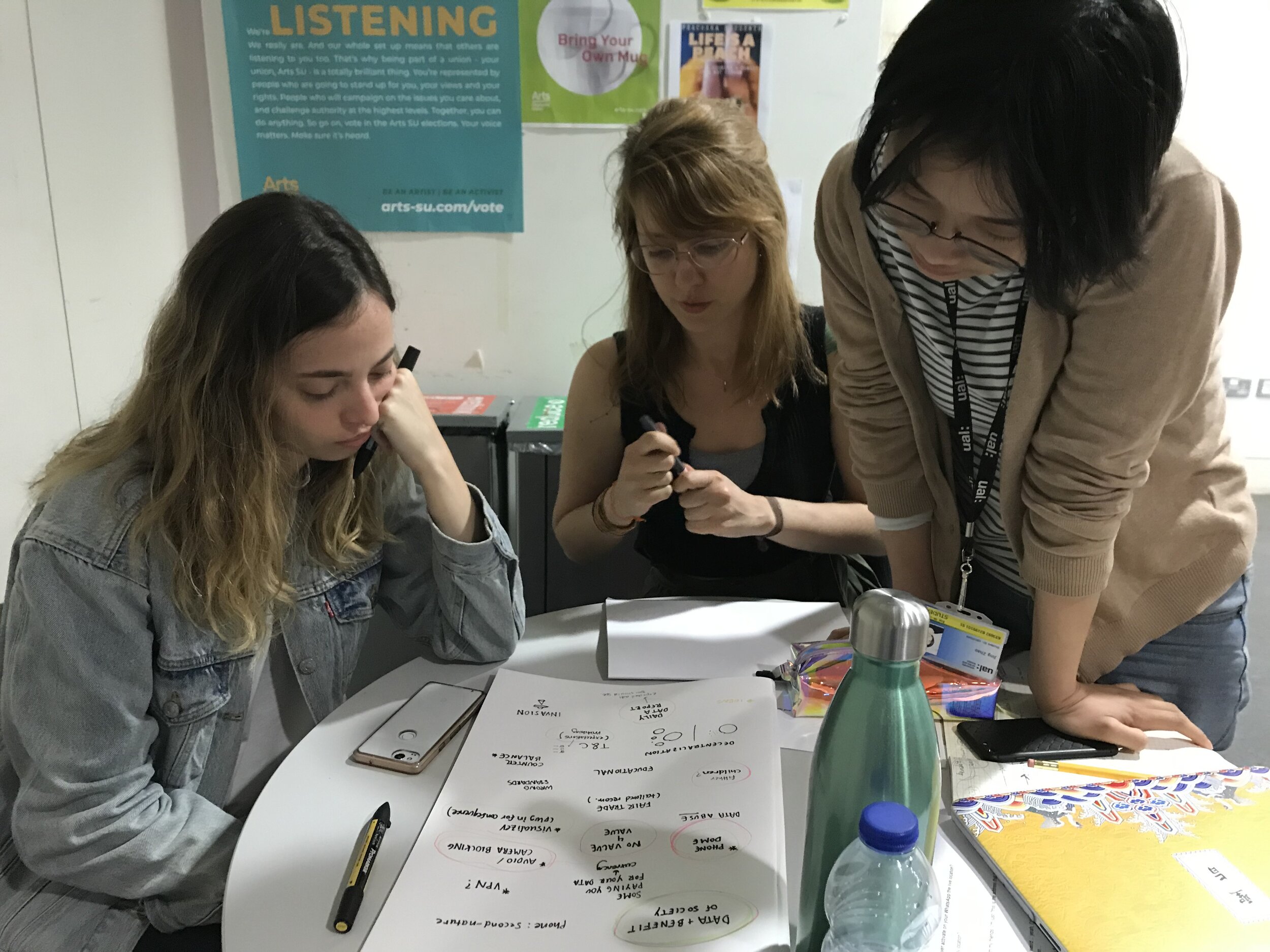
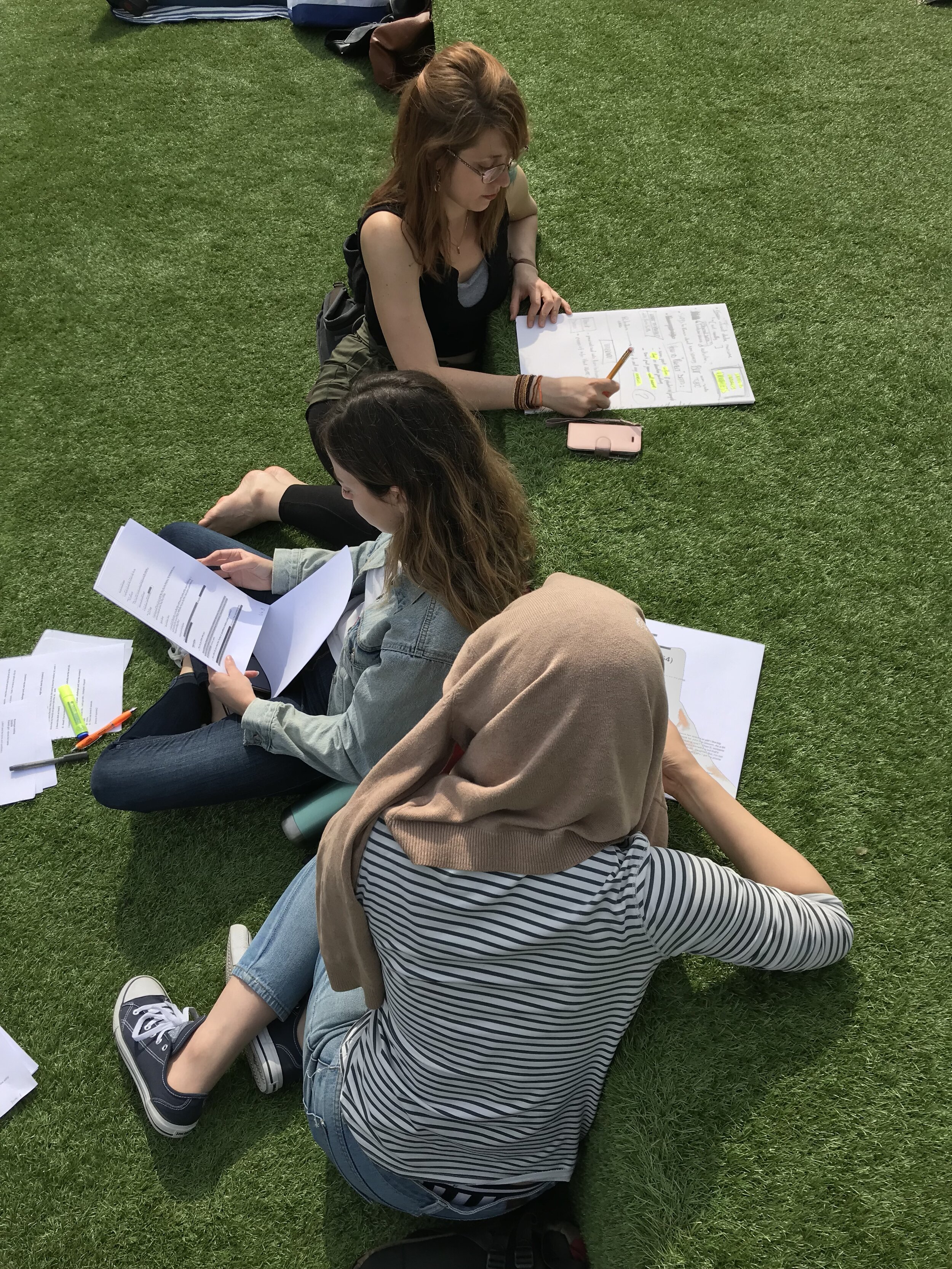
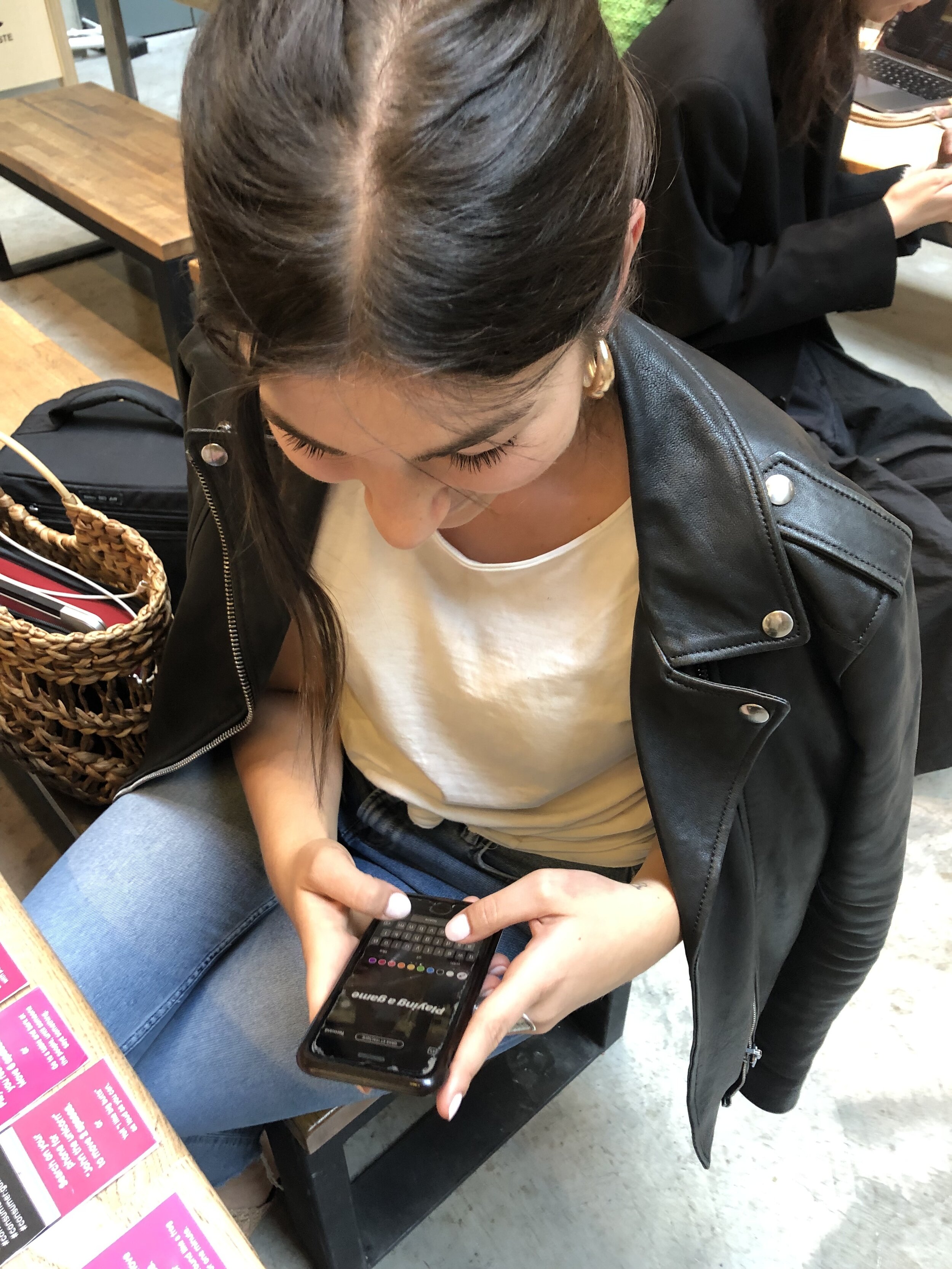
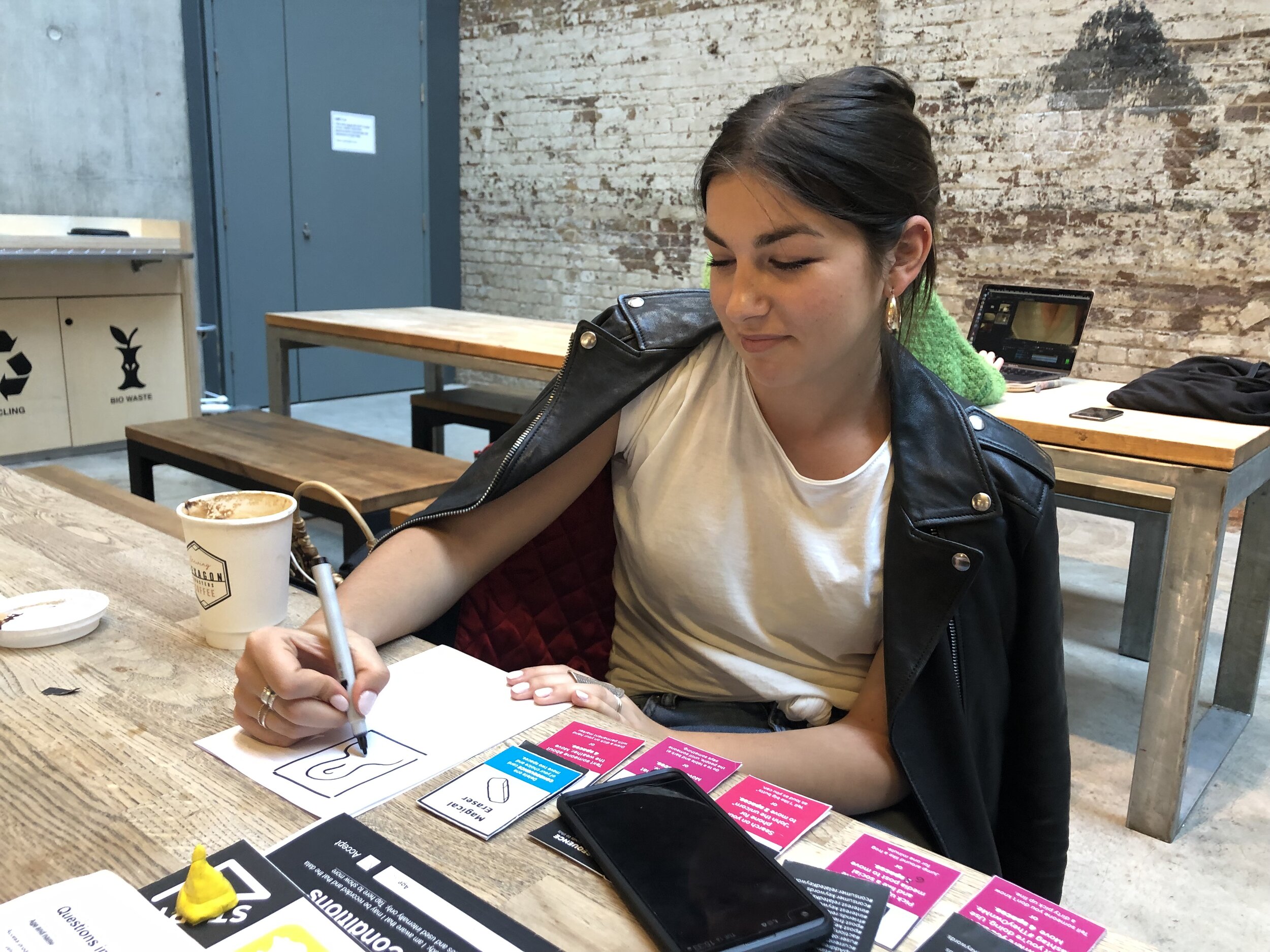
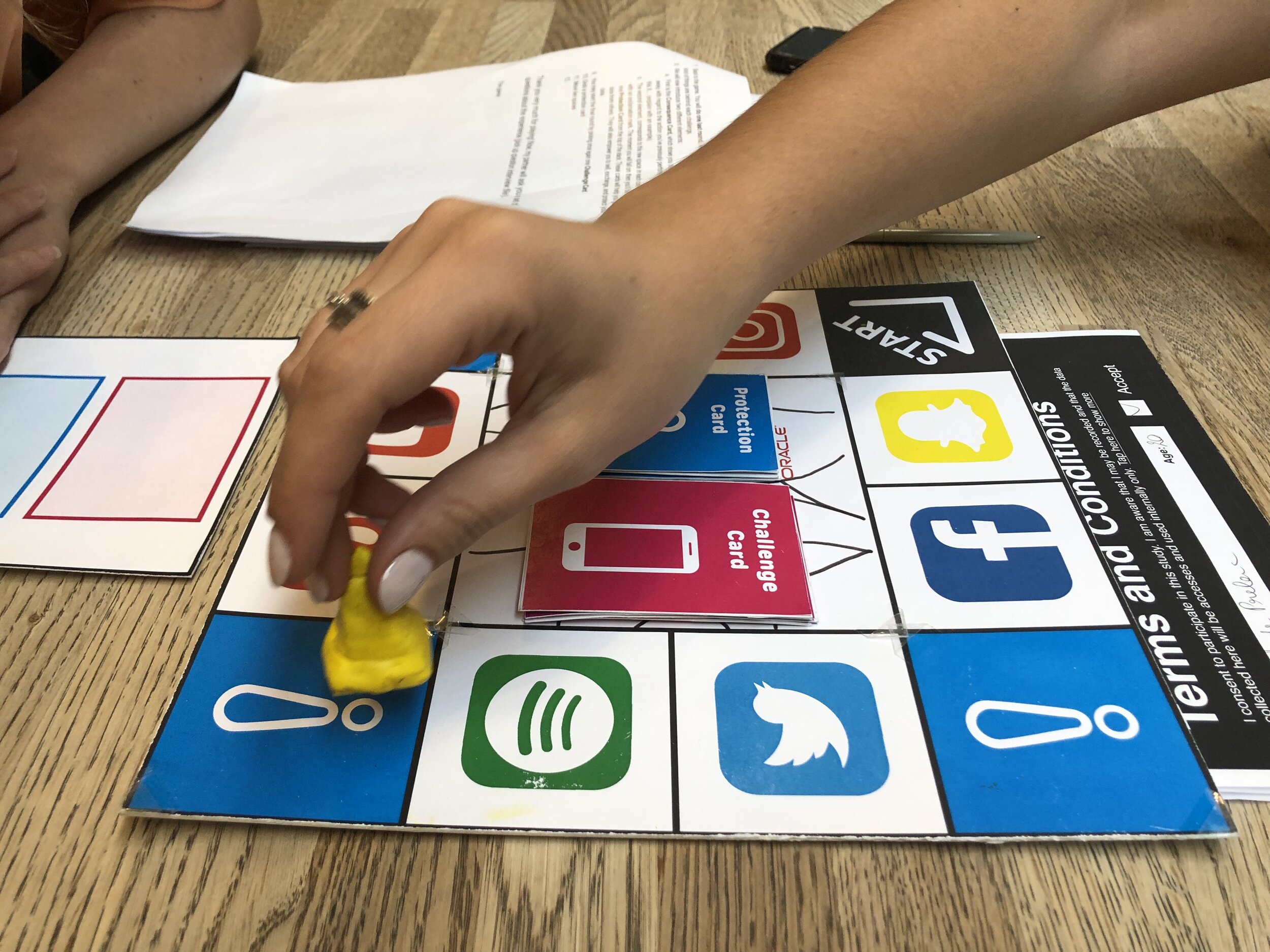
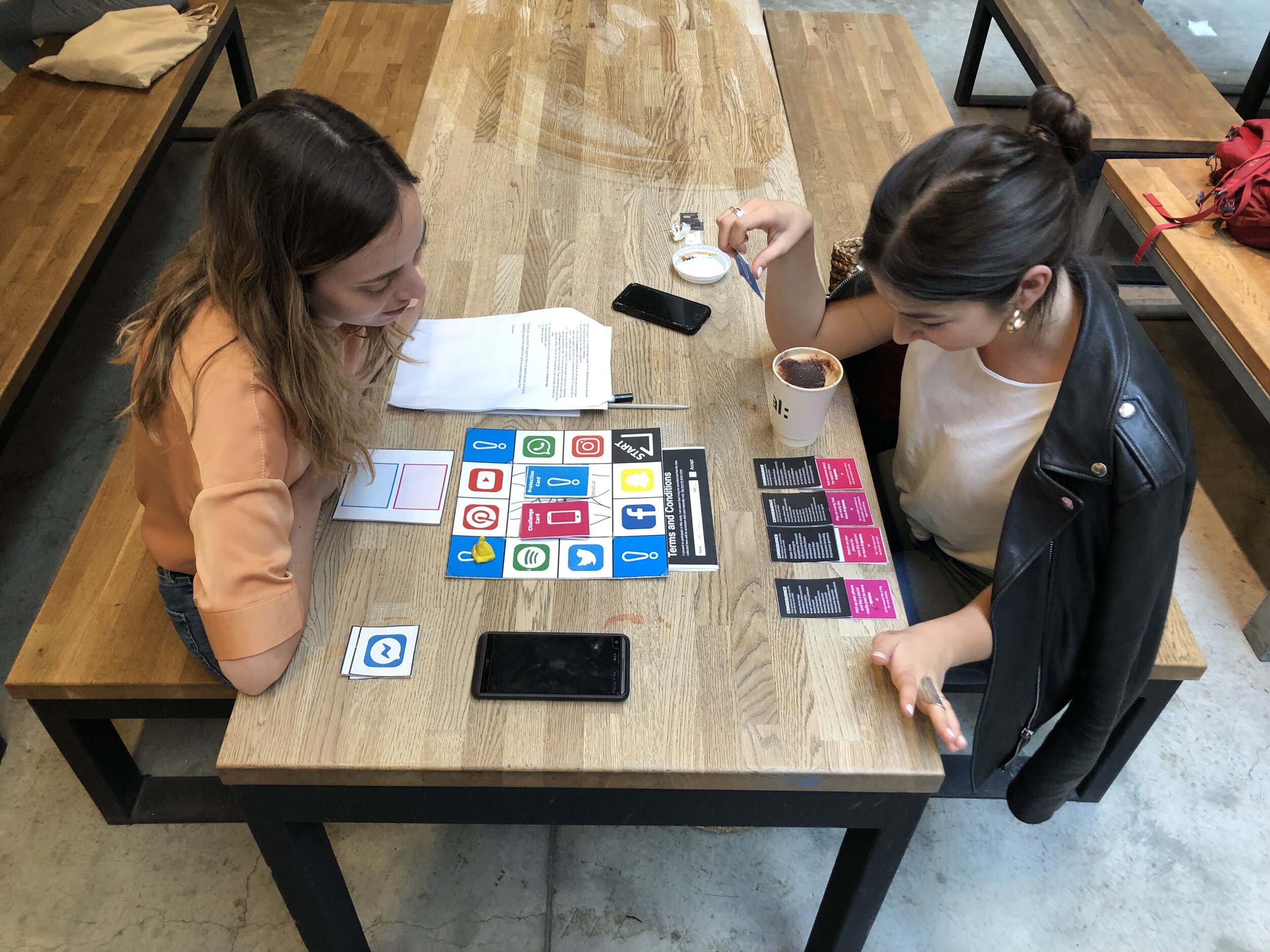
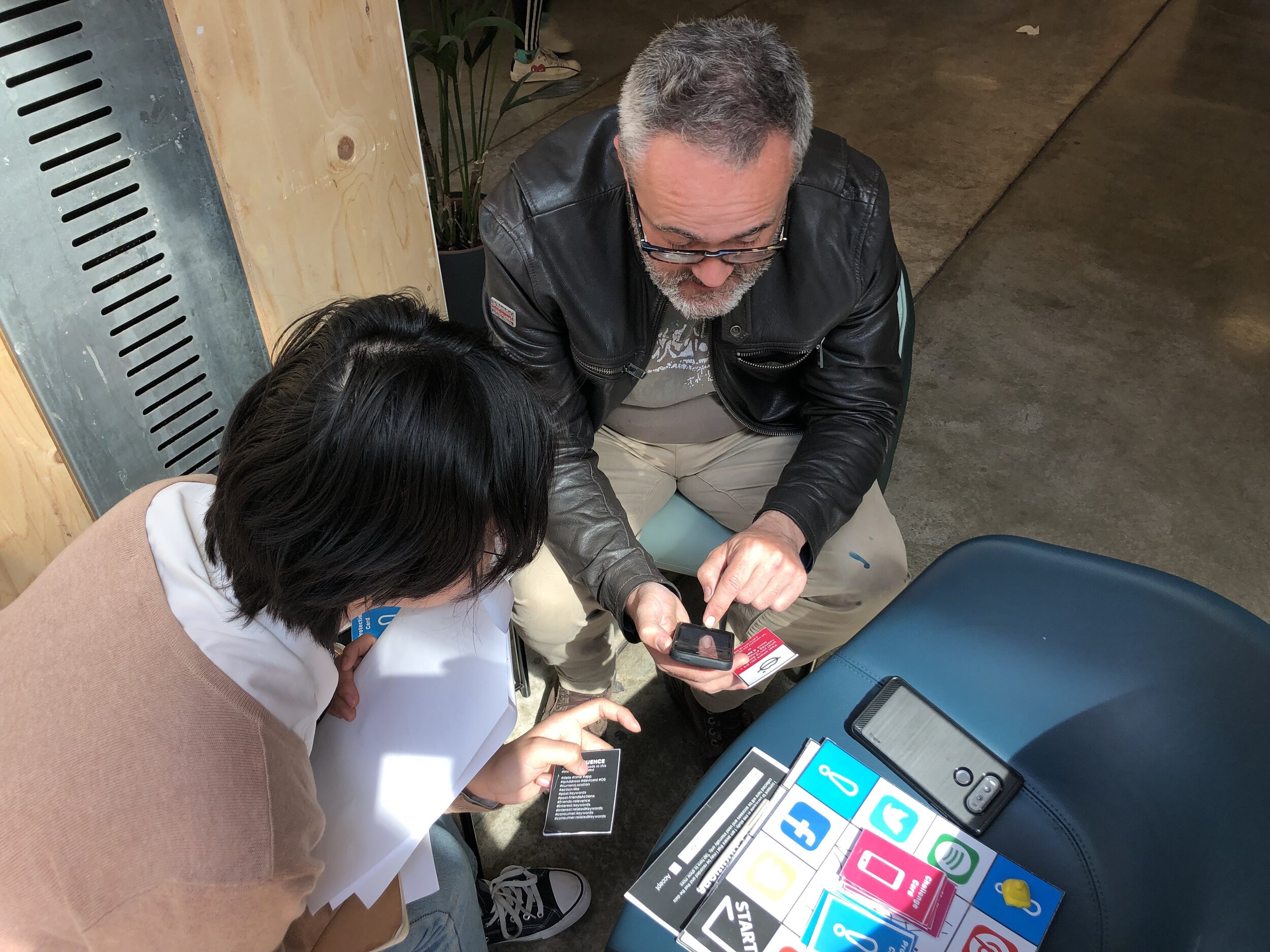
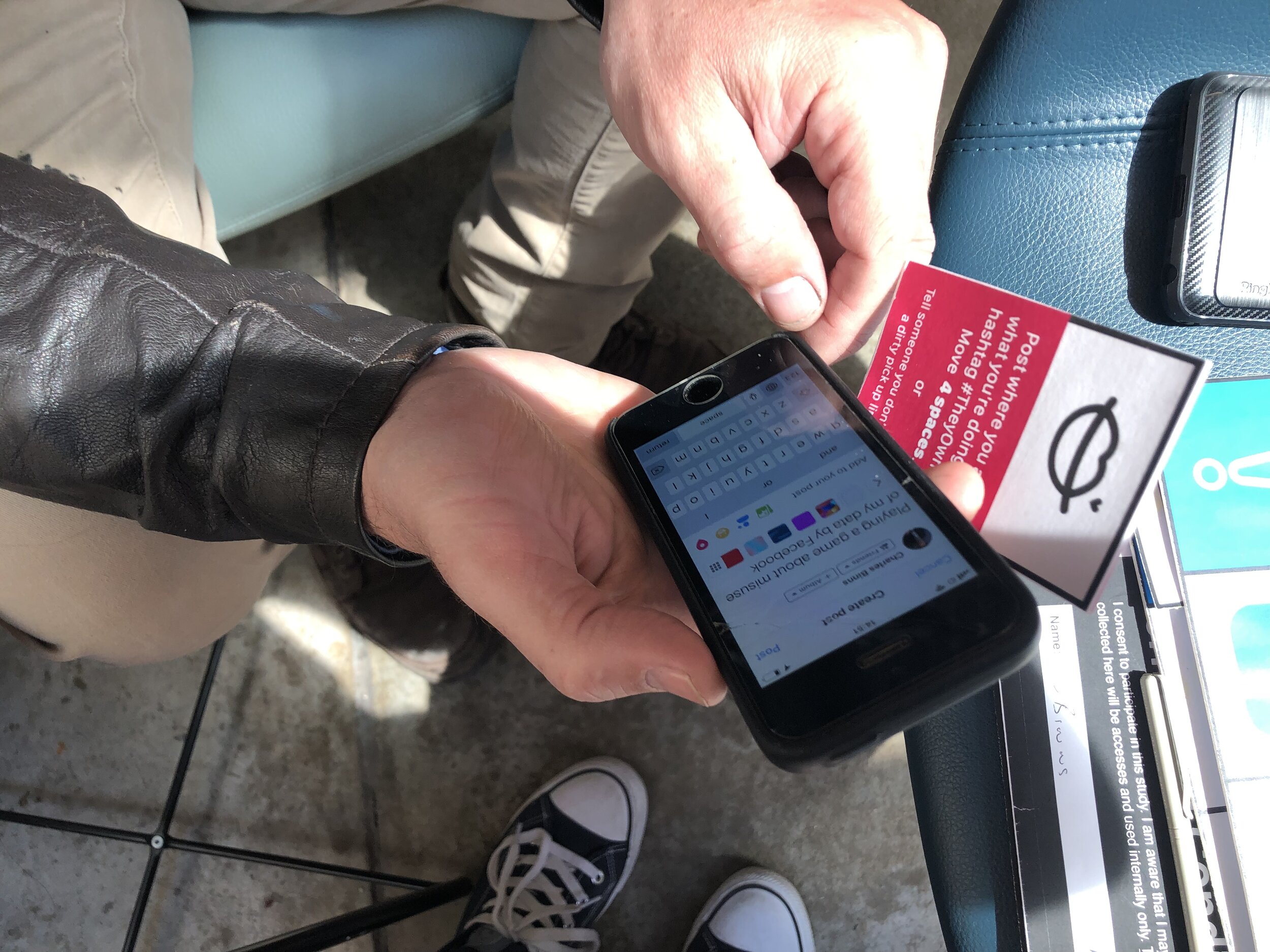
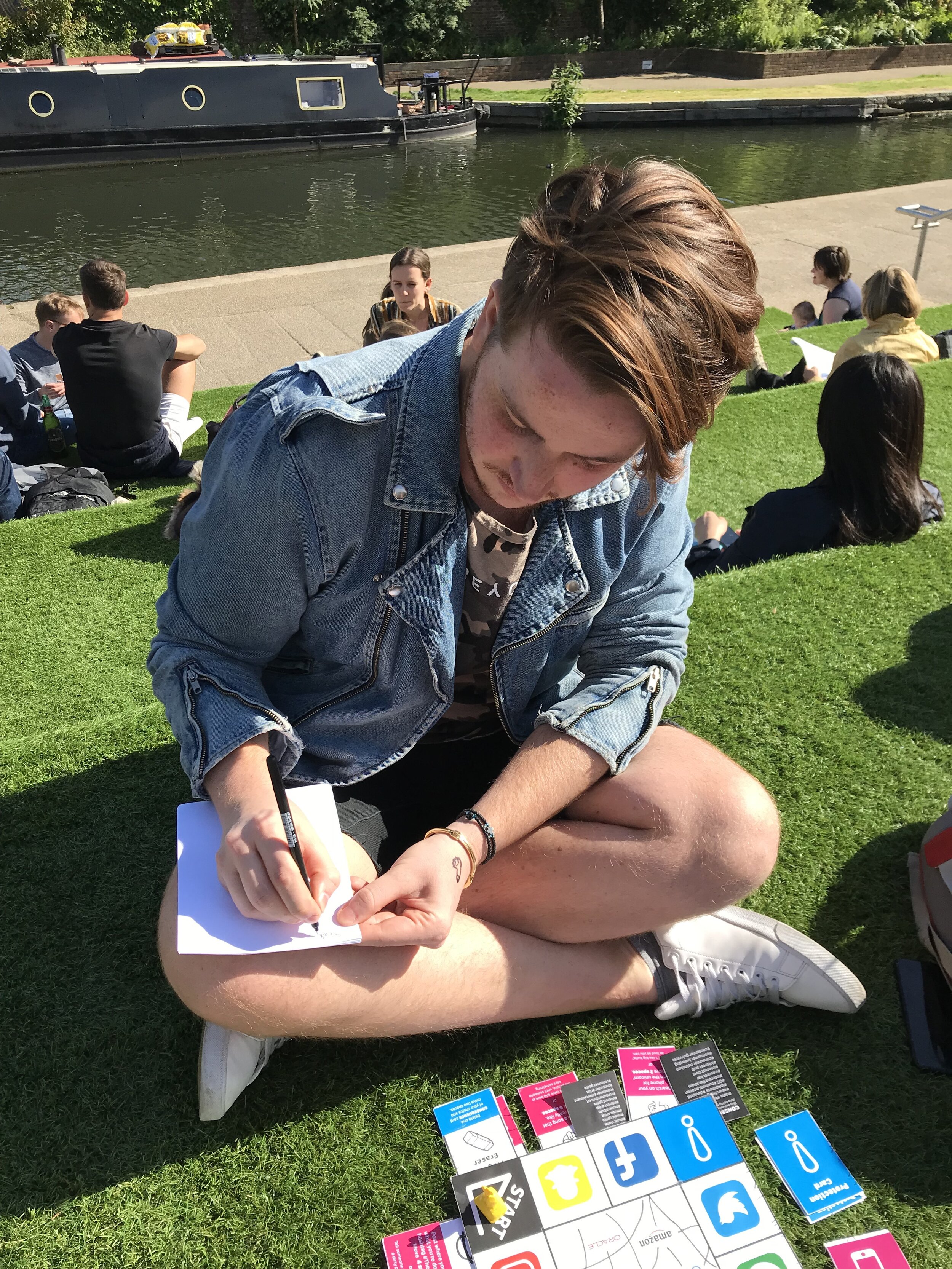
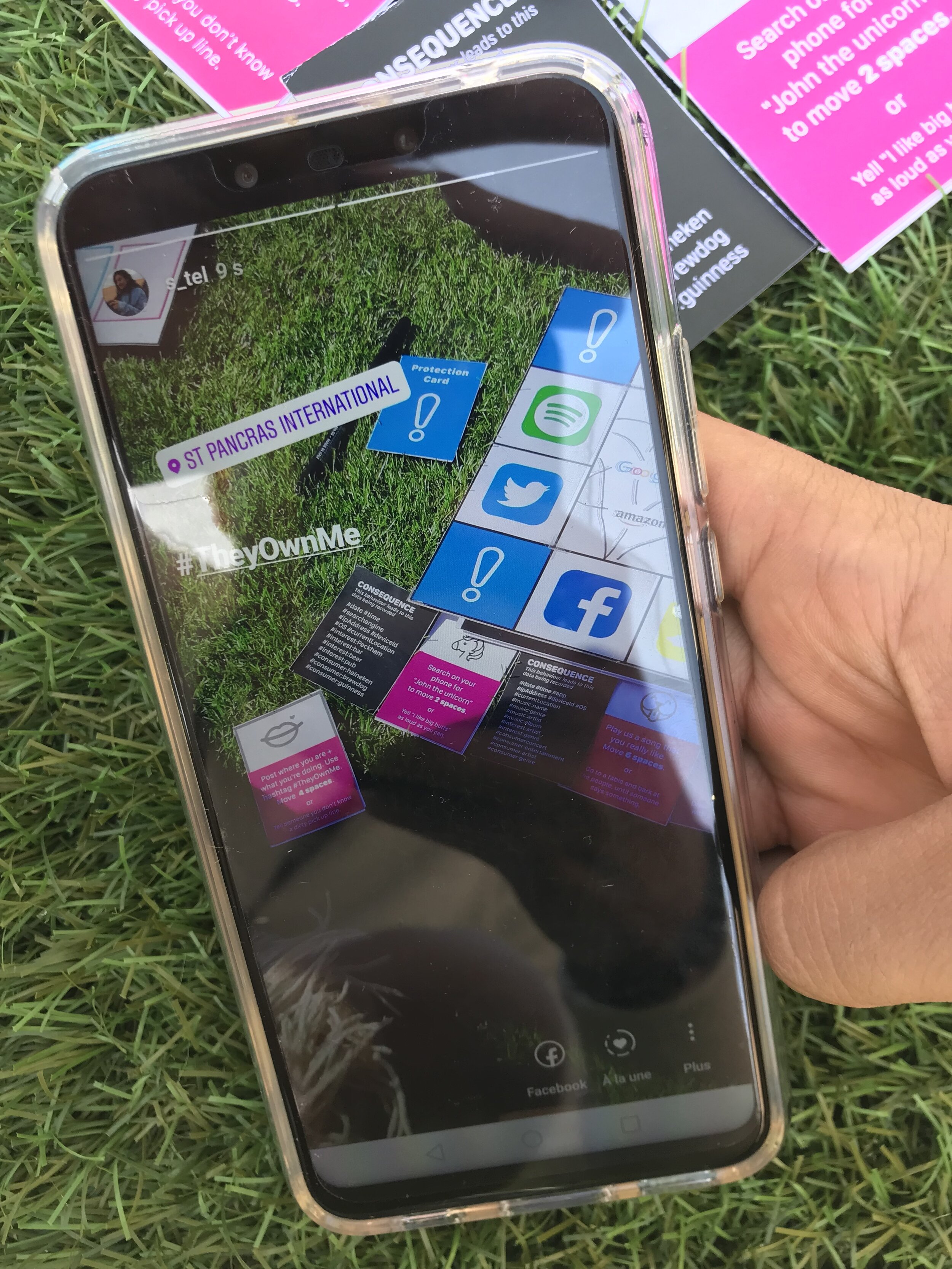
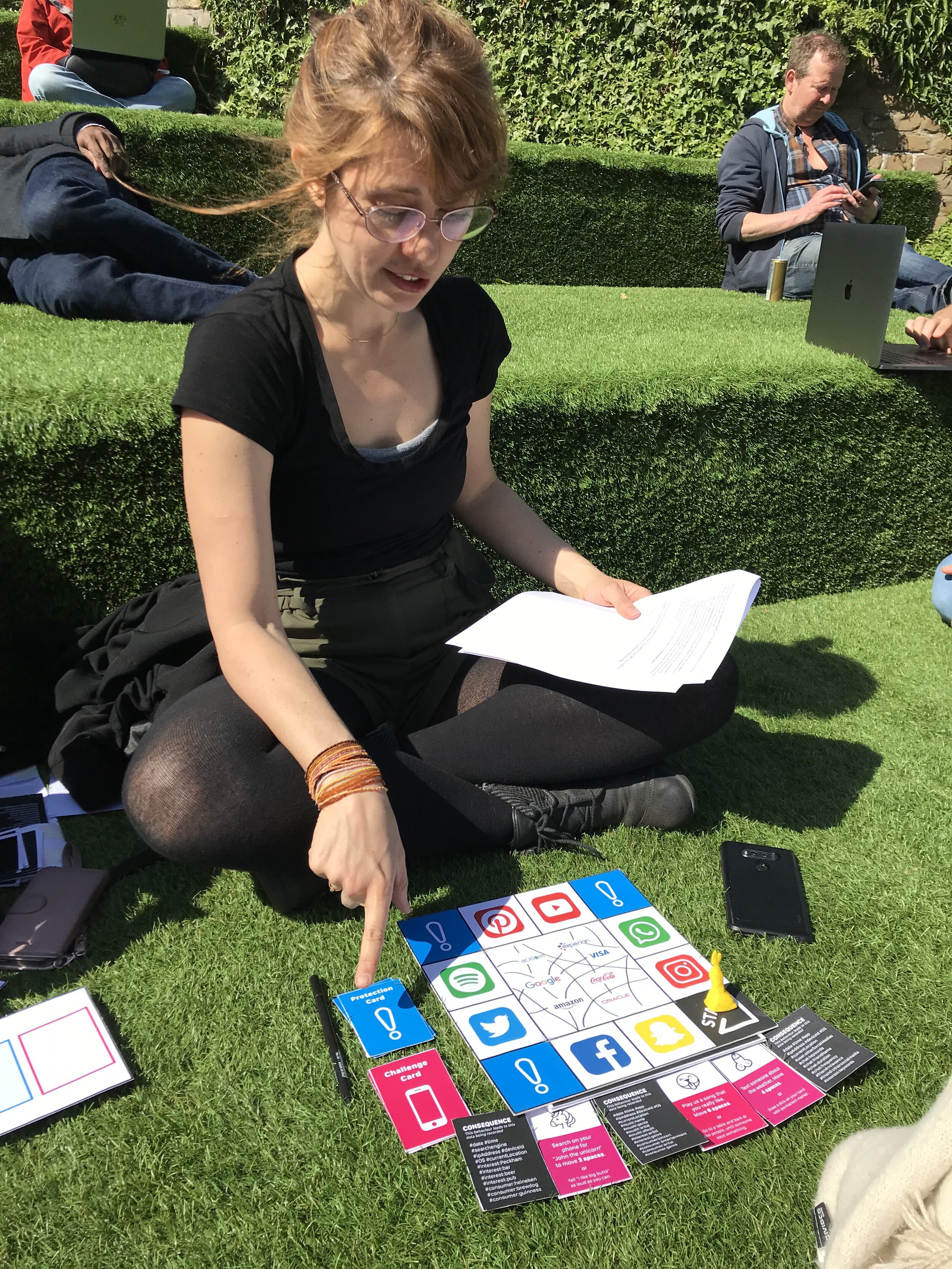
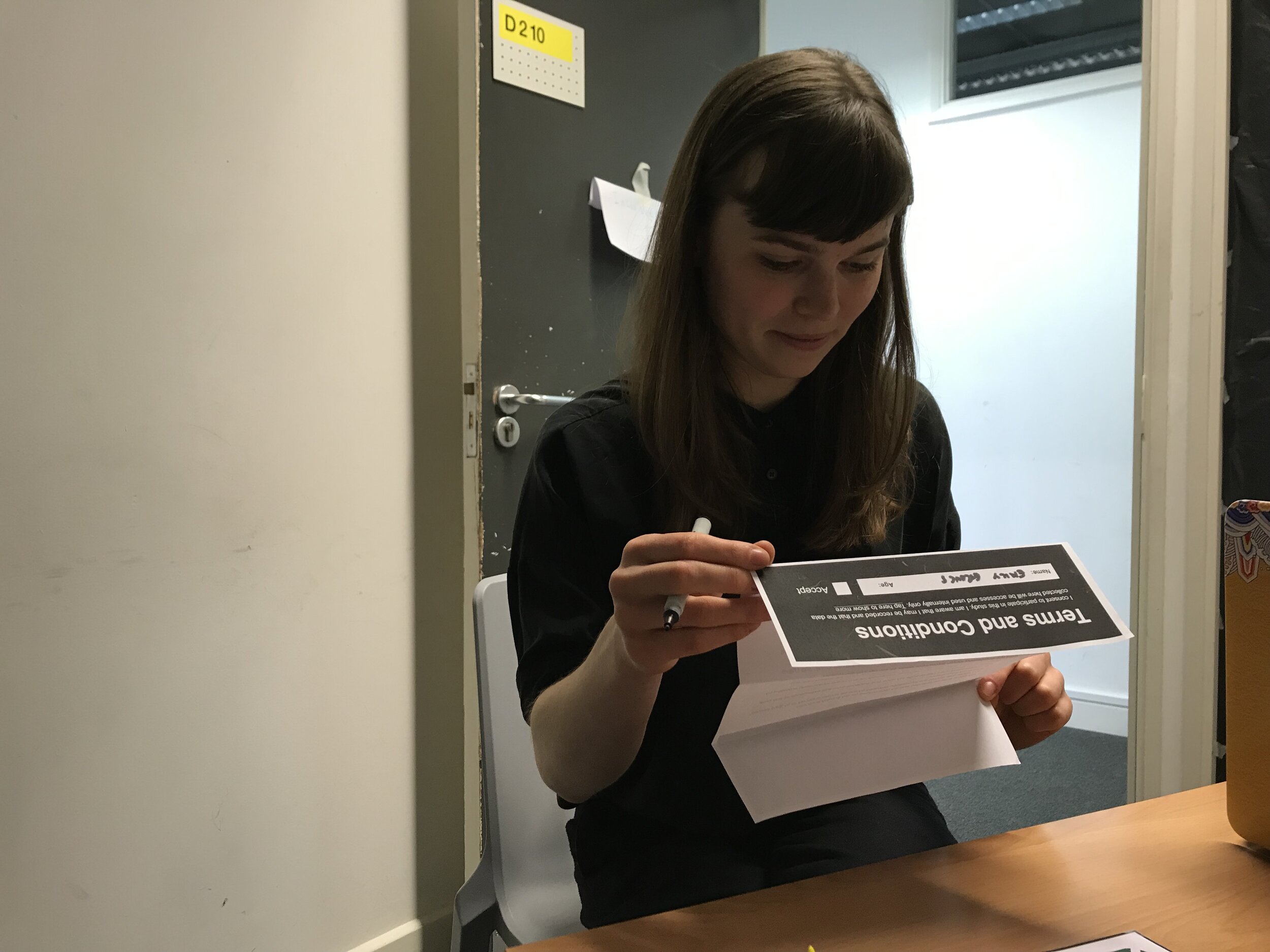
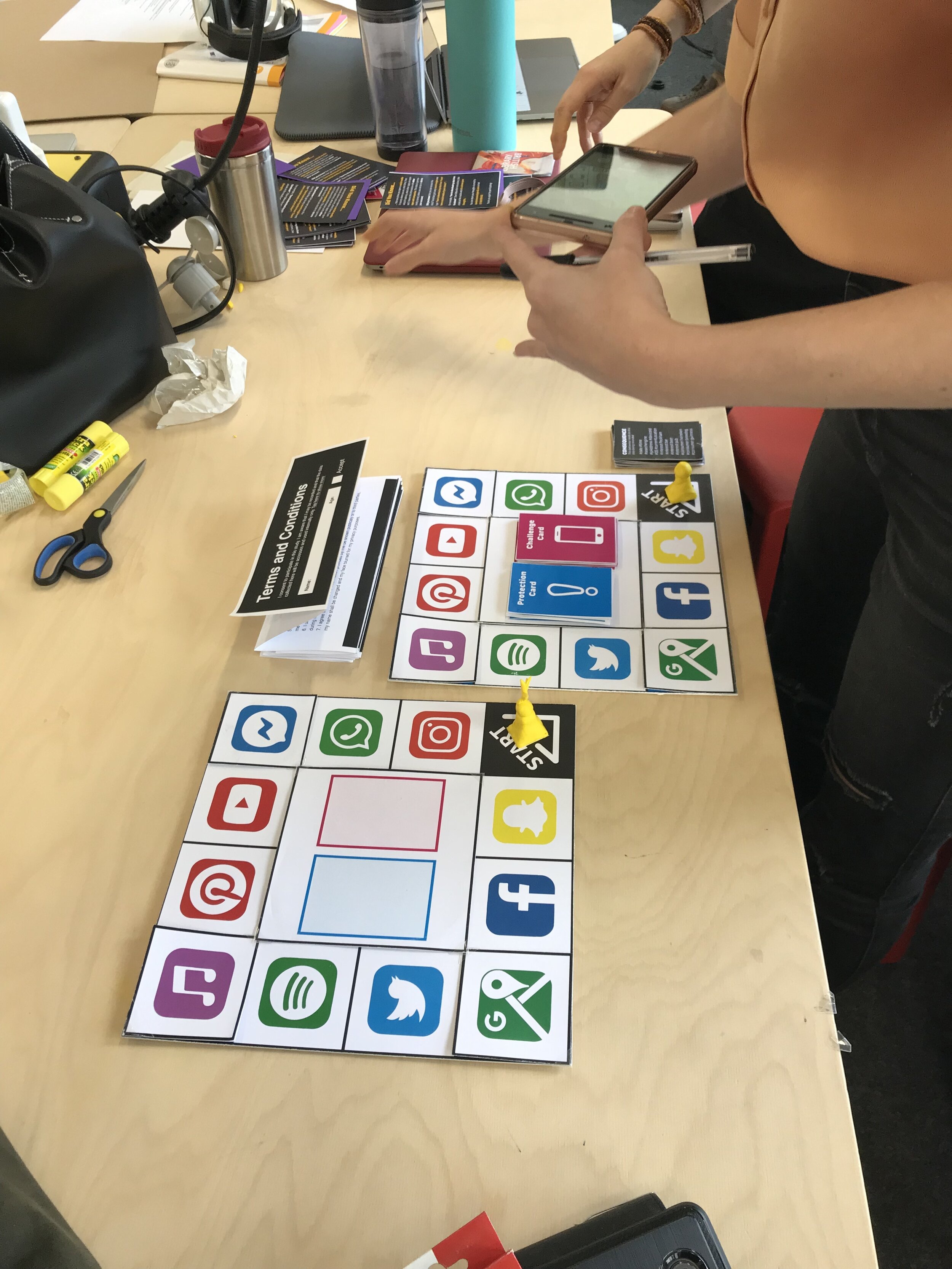

Research Method
Initial research
Project started with literature and practical review, key concepts (system of value, financial transaction and ownership) are defined and followed up with a value mapping experiment on perceived value and given value. 31 participants joined and ranked the given items. After revealing the stories from owners and the prices, they could reposition the items on the map. Each round ended up with interviews trying to know how they view on the factors that changing the value.
Competitive analysis
4 similar products (available in Q1 2019) in the market were reviewed: Tinder, Bumble BFF, Slowly and Hey!Vina. Each app was tested by 4 participants for 1 week and given feedback based on interface designs, app flow and match result.
Speed dating &
Concept testing
3 storyboards and 2 digitalized wireframes were given to 27 targeted users, who are 25-35, for final commons on the whole concepts, layouts and user flow. Working together with a priority map, the whole app flow was re-structured and towards more target focus.
Game of digital privacy
It is another experiment in a form of board game, which is built upon Monopoly, to understand people’s view on the digital data privacy and gain insights about hypothetical behaviours considering new scenarios of data ownership and exchange. Each participant will land on the same designed route to control variables, compare results and avoid bias. 32 people participated.
Through providing players with experience:
To reveal the amount of information they give away and how that information correlates with the platform being used and other entities;
To use the materiality of the phone to deliver a more powerful message;
To reflect on the value of the information;
To enable potential data ownership/exchange and observe behaviours around it.
Final Design
Goals
Create a product to build real relationships with trust
Provide a trustable platform to users who value privacy
Promote slow-paced dating process
Build a system to build connection through exchanging co-value
Stage 1:
Value set up
Value here means things and stories about a user. Users first need to pass from identity verification to except scam and try to build initial trust between users and system. Then there is a personality test given helping system for later matching process. Afterwards, users will enter the basic background and record the material (value) for exchange.
There are 3 levels of exposure on recordings, 1) voice recording, 2) videos about objects or daily life without user’s face and, 3) selfies. Some guidelines will be given help to break the barriers of commutations as well as kickstart a relationship. The questions are open-ended in different topic categories aiming to create content about users in multi-angles. All materials are recorded in-app only, no upload function is allowed to avoid filtered media meanwhile hoping users to further build trust on the system.
Once a certain number of recordings saved, a trailer will be generated. Trailer is a 30-seconds video overviewing the user. It is automatically select clips from level 1, the result of the personality test and keywords of self-descriptions. After all been set, the system will start looking for matches.
Stage 2:
Matches - Pair up, View and Exchange
Matches are generated based on the result of the personality test, provided background and topic selection of the recording. The system will give 7 potential matches every week and force users to pick one for further conversation. Profiles only display names, trailers and keywords of bio. After viewing the trailer, User A can decide to/not to permit the User B viewing the material selected in level 1.
User B will then receive a request the trailer of User A. If User B is interested, he needs to do the same to select materials in level 1 and exchange with User A. Then, both users can see the other materials. Every time only one recording can be revealed from a selection of 3. Exchange system is formed. More recording will be revealed and unlocked levels by levels by request. No additional messages to the recording are allowed until level 2 and no chatroom functions is provided to avoid process speed up.
Stage 3:
Meet up
After reached level 3 and exchanged a number of recordings, the system will start advice users to meet up in real. If both users agree, the system will give several locations related to their interest aiming to let users explore unknown and create co-memory or new experience together.
Real-life experiment
Based on the app flow, team decided to conduct an app-free testing simulating the concept. Late April 2019, 2 pair of strangers were invited to match up through assigned activities. Each activity would be representing different levels of personal exposure for exchange. They would be instructed and finished level by level. The result of testing was a success. The participants decided to meet up at the end and became friends as the goal of the app.







